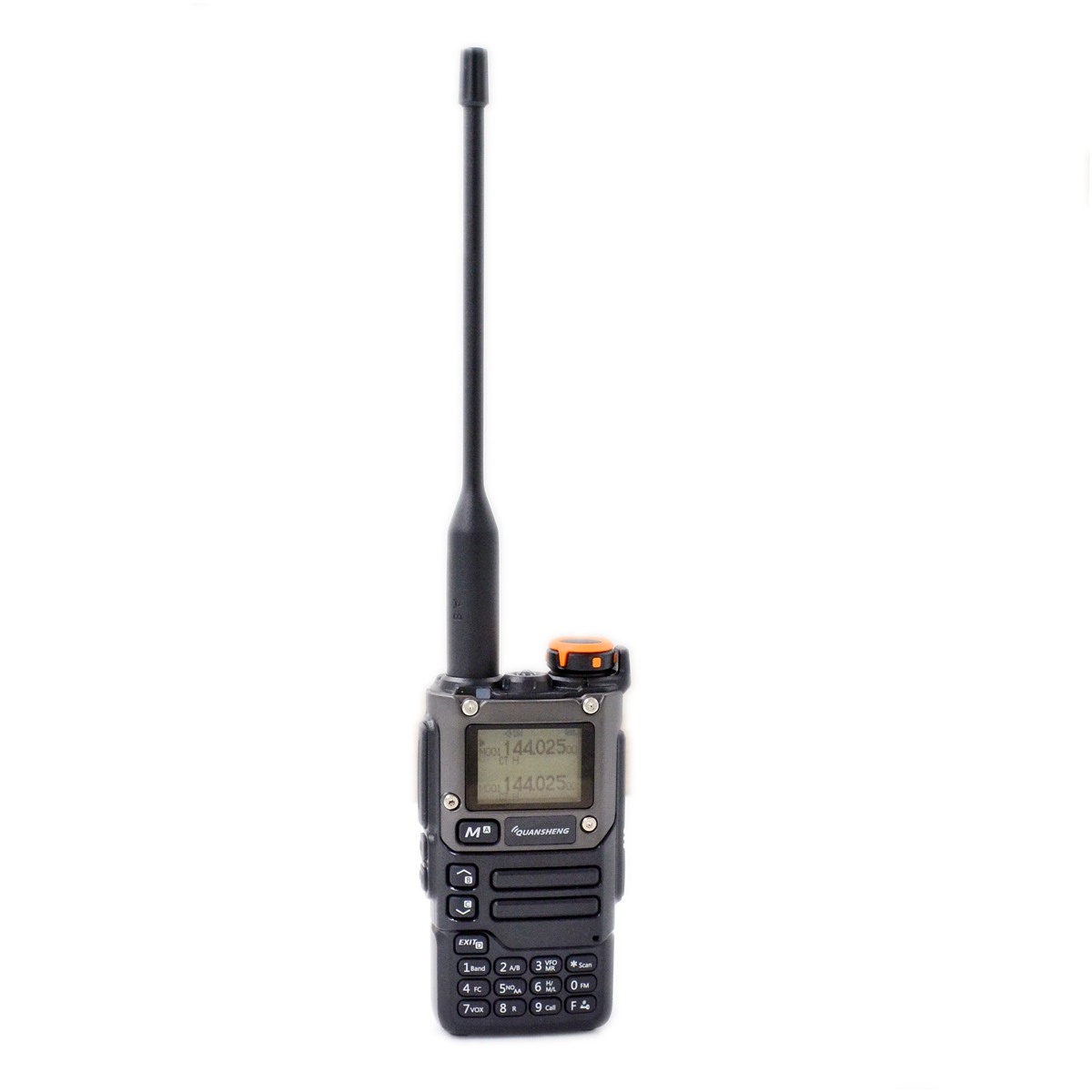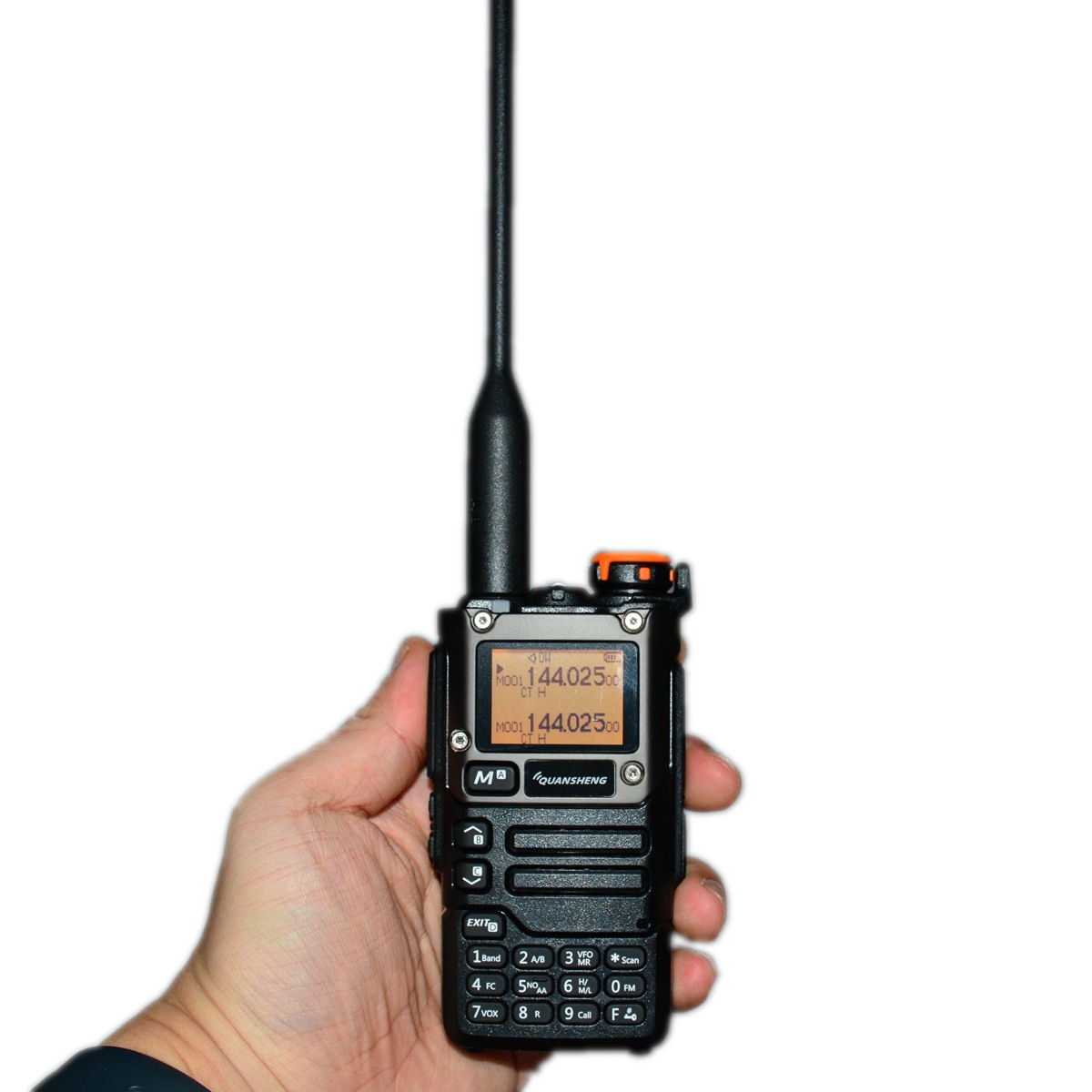|
Product features |
||
|
NOAA weather reception |
25: |
DTMF |
|
Fast linking |
26: |
DTMF ANI |
|
10 groups of voice encryption (scrambling) |
27: |
High, medium and low power options |
|
Large capacity battery/long standby time |
28: |
Receive and transmit signaling are set separately |
|
Lighting function |
29: |
Multiple step frequencies |
|
Reverse frequency operation function |
30: |
Initialize the settings |
|
Timeout timer |
31: |
Channel storage |
|
Transmits 1750 signals |
32: |
Computer programmable |
|
Frequency, channel mode conversion |
33: |
Tone switch |
|
200 channels |
34: |
AM/FM air segment reception |
|
Voice telegram |
35: |
FM radio |
|
Multi-segment transmit and receive |
36: |
Digital signaling CTCSS/DCS |
|
Automatic/manual emergency alarm |
37: |
TYPE-C and mount |
|
Multiple scans |
38: |
VOX voice-activated emission function |
|
Difference frequency direction setting |
39: |
Automatic signaling search |
|
Difference frequency setting |
40: |
Busy and banned |
|
Wide and narrow band options |
41: |
Channel number, channel frequency, channel name Multiple display methods |
|
Squelch level setting |
42: |
Channel scan added |
|
Keypad lock |
43: |
Large screen dot matrix LCD display |
|
The backlight automatically turns off the selection time |
44: |
Transit desk forwarding confirmation function |
|
Cross-segment intercom function |
45: |
Boot password protection |
|
Wireless full machine replication |
46: |
Frequency meter function |
|
DTMF dialing |
47: |
That is, the call channel |
|
On-site programming |
|
|
|
General specifications |
|
|
|
|
|
|
Signal channel |
: |
200 |
Audio power |
: |
≥0.5W |
|
Number of FM radios stored |
: |
20 |
Audio distortion |
: |
≤10% |
|
Frequency stability |
: |
±1ppm |
launch |
|
|
|
Size |
: |
115mmX60mmX37.5mm |
Band |
: |
144∽146MHz430∽440MHz |
|
weight |
: |
234g |
Transmit power |
: |
4W |
|
Operating temperature |
: |
-20℃+60℃ |
Transmit current |
: |
≤1.5A |
|
Antenna impedance |
: |
50 euros |
Maximum frequency offset |
: |
≤5KHz(25KHz),≤2.5KHz(12.5KHz) |
|
Modulation mode |
: |
FM:11KOF3E(12.5KHz),16K0F3E(25KHz) |
Modulation distortion |
: |
≤5% |
|
NOAA channel number |
: |
10 |
Stray components |
: |
≤7.5uW |
|
Battery capacity |
: |
1600mAh |
Frontage power |
: |
70dB(25KHz),60dB(12.5KHz) |
|
reception |
: |
|
Residual modulation |
: |
40dB |
|
Reference sensitivity |
: |
FM(12dB SINAD) F1(50∽76) -121dBm F2(108∽135.9975) -121dBm F3(136∽173.9975) -123dBm F4(174∽349.9975) -123dBm F5(350∽399.9975) -123dBm F6(400∽469.9975) -123dBm F6(470∽599.9975) - 121dBm WFM(20dB SINAD) WFM(76∽108) -110dBm AM(10dB S/N) F2(108∽135.9975) -113dBm |
|
|
|












|
|
Intercom precautions |
|
1: |
Before using the walkie-talkie, make sure that the battery or rechargeable battery is properly installed. |
|
2: |
Before using the walkie-talkie, familiarize yourself with its functions and operation methods. |
|
3: |
Follow the walkie-talkie's guidelines and safety regulations. |
|
4: |
When using a walkie-talkie, make sure your voice is clear and easy to understand. |
|
5: |
When you are not using the walkie-talkie, turn it off to save battery life. |
|
6: |
Avoid exposing the walkie-talkie to heat, humidity, or extreme cold. |
|
7: |
Avoid using walkie-talkies while using other electronic devices such as cell phones or radios. |
|
8: |
Avoid using powerful electronic devices or sources of radio interference near walkie-talkies. |
|
9: |
When using walkie-talkies, observe local regulations and regulations, including radio frequencies and usage restrictions. |
|
10: |
When using the walkie-talkie, please respect the privacy and safety of others. |
|
11: |
For more precautions and recommendations on the use of walkie-talkies, you can look up the walkie-talkie manufacturer's website or online forum. |
|
12: |
If the walkie-talkie needs to be used in a high-temperature environment, make sure it has adequate ventilation to prevent overheating. |
|
13: |
Avoid exposing the walkie-talkie to extremely low temperatures, as low temperatures can damage batteries and electronics, causing the walkie-talkie to malfunction. |
|
14: |
If the walkie-talkie needs to be used in an extremely low temperature environment, make sure it has adequate protection to prevent freezing and damage. |
|
15: |
When using the walkie-talkie, follow the manufacturer's temperature limits and recommendations. |
|
16: |
Follow the walkie-talkie's usage guidelines and safety regulations to ensure proper use and maintenance of the walkie-talkie. |
|
17: |
Avoid using other electronic devices or sources of radio interference near the walkie-talkie to prevent interference and damage to the walkie-talkie. |
|
18: |
When using the walkie-talkie, be aware of your surroundings to ensure your safety and the safety of others. |
|
19: |
Comply with local regulations and regulations, including radio frequency and usage restrictions. |
|
20: |
If there is any abnormality in the walkie-talkie, please stop using it immediately and contact the manufacturer or professional technicians for inspection and repair. |